The following diagram displays a chemical reaction. Observe carefully and answer the questions.
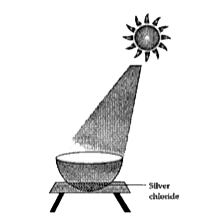
The other silver salt which behaves like silver chloride in sunlight is:
silver hydride
silver bromide
silver iodide
silver nitrite
The correct Answer is:B
Silver bromide gives silver metal and bromine gas on photolytic decomposition. Decomposition reactions of silver chloride and silver bromide in presence of sunlight are used in black and white photography.
2AgCl(s)→2Ag(s)+Cl2(g)
2AgBr→2Ag+Br2
Topper's Solved these Questions
- CHEMICAL REACTIONS AND EQUATIONSBOOK - OSWAL PUBLICATIONCHAPTER - CHEMICAL REACTIONS AND EQUATIONSEXERCISE - ASSERTION AND REASON BASED MCQs
8 Videos
- CHEMICAL REACTIONSBOOK - OSWAL PUBLICATIONCHAPTER - CHEMICAL REACTIONSEXERCISE - BOARD CORNER (Short Answer Type Questions)
3 Videos
- DIKSHA QUESTIONS BOOK - OSWAL PUBLICATIONCHAPTER - DIKSHA QUESTIONS EXERCISE - PERIODIC CLASSIFICATION OF ELEMENTS (MULTIPLE CHOICE QUESTIONS)
13 Videos
Similar Questions
The following diagram displays a chemical reaction. Observe carefully and answer the following questions :

What happens to the silver chloride?
View SolutionThe following diagram displays a chemical reaction. Observe carefully and answer the following questions :
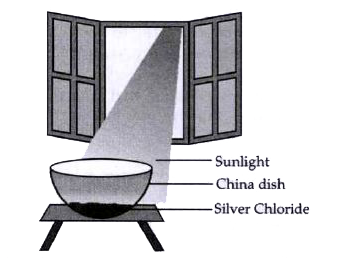
Mention one commercial use of this salt.
View Solution
Knowledge Check
The following diagram displays a chemical reaction. Observe carefully and answer the questions.

The type of chemical reaction that will take place isAPhotochemical decompositionBDisplacement reactionCReduction reactionDCombination reactionThe following diagram displays a chemical reaction. Observe carefully and answer the questions.
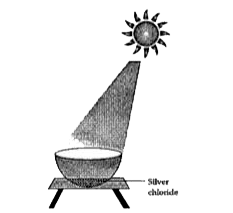
The correct balanced chemical equation involves:A2AgCl(s)sunlight−−−−→2Ag(s)+Cl2(g)BAg+Cl→AgClCAgCl2→Ag2+Cl2DAgClsunlight−−−−→2Ag+Cl2The following diagram displays a chemical reaction. Observe carefully and answer the questions.
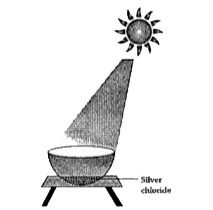
What colour change is observed in silver chloride?ASilver chloride turns white.BSilver chloride turns brown.CSilver chloride shows no colour change.DWhite silver chloride changes to grey.
The following diagram displays a chemical reaction. Observe carefully and answer the following questions :
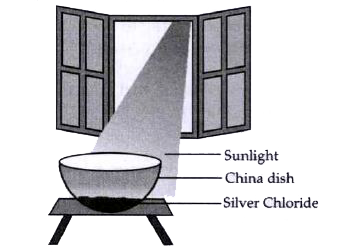
The type of chemical reaction that will take place is :
View SolutionThe following diagram displays a chemical reaction. Observe carefully and answer the following questions :

Write the chemical equation of the reaction involved.
View Solution(a) The given diagram displays a chemical reaction. Observe carefully and answer the following questions :
(b) Identify the type of chemical reaction that will place and define it. How will the colour of the salt change ?
(c) Write the chemical equation of the reaction that takes place.
(d) Mention one commercial use of this salt.
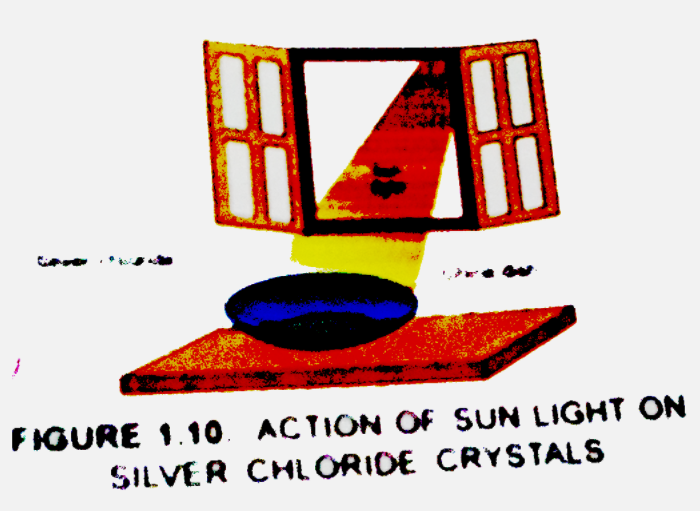
View SolutionObserve the following diagram and answer the questions.

how is this defect corrected ?
View SolutionThe following diagram displays a chemical reaction. Observe carefully and answer the questions.
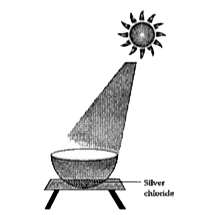
When decomposition is carried out by heating, it is called as:
View Solution
